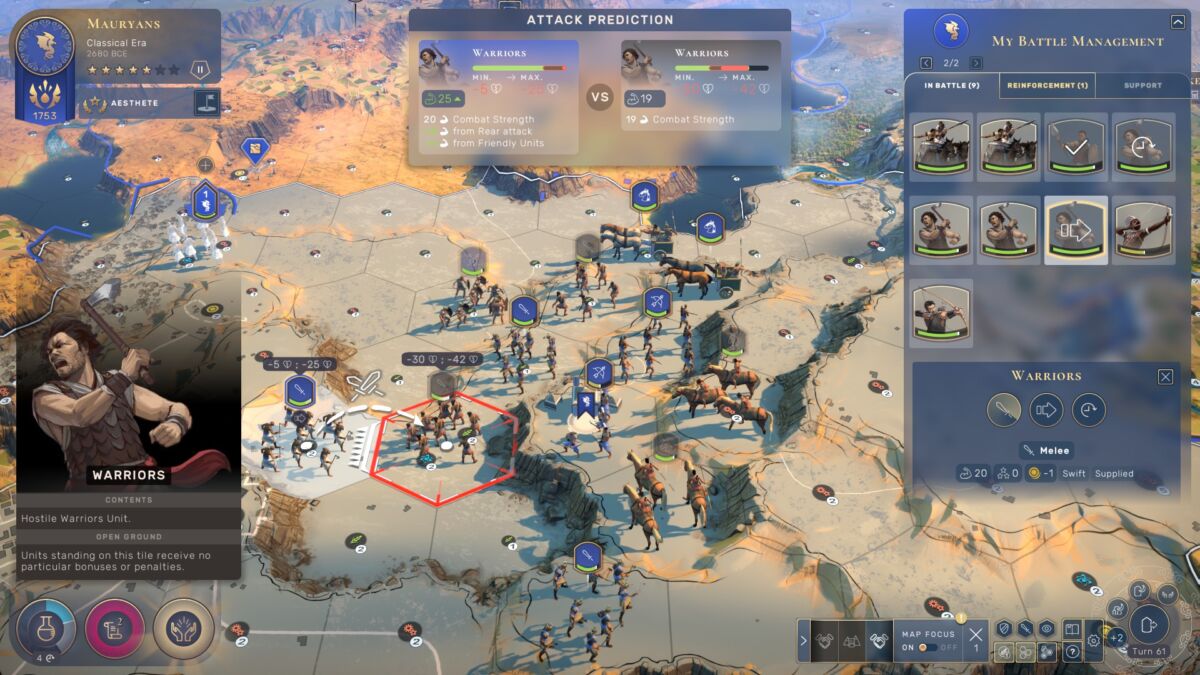Anyway...cards are a simple metaphor and one that is universally understood.
Old World's order system is complicated. (How many people are playing it RN?)
Here's how a card based combat system could work:
Units will have have a deck of cards for actions. E.g: Fortify. Garrison. Charge. Heal. Siege (for catapults/etc. attacking cities) or Grapeshot (for attacking units). Sentry. Raid/Pillage.
No matter how many units you have, each player has same number of card plays + moves + redraws each turn.
So, let me see if I understand you.
In order to artificially limit what my units can do, the game will introduce an artificial game mechanic that tries to give the same command and control problems to ALL Civs, regardless of their technology, policies, size of armies, or training of their men, units, officers, etc.
Introduce that, and I'll go back to playing poker: at least that's a card system that makes sense in its context.
If you want to limit the options of civs and armies and units, there are numerous far less 'gamey' methods. As ridiculous as the implementation of Old World's 'orders' system is, it is a better base on which to build a working limitation system (for starters, don't allow multiple moves to a single unit so that 'armies' actually move as a group instead of like a set of grasshoppers).
Another limiting system, used for at least 50 years in board games, would be to make individual units moveable, but stacks of units ('armies') can only move, and no unit can attack, unless they are accompanied (within range of) a General. Then limit the number of Generals by technologies, policies, number of Military Schools, etc and the massively important Soft Factors of Leadership and Command and Control in warfare become immediately apparent in the game - and the gamer is instantly aware of what his limitations are, because the Generals are On The Map and he knows what he has to do to get more of them.


